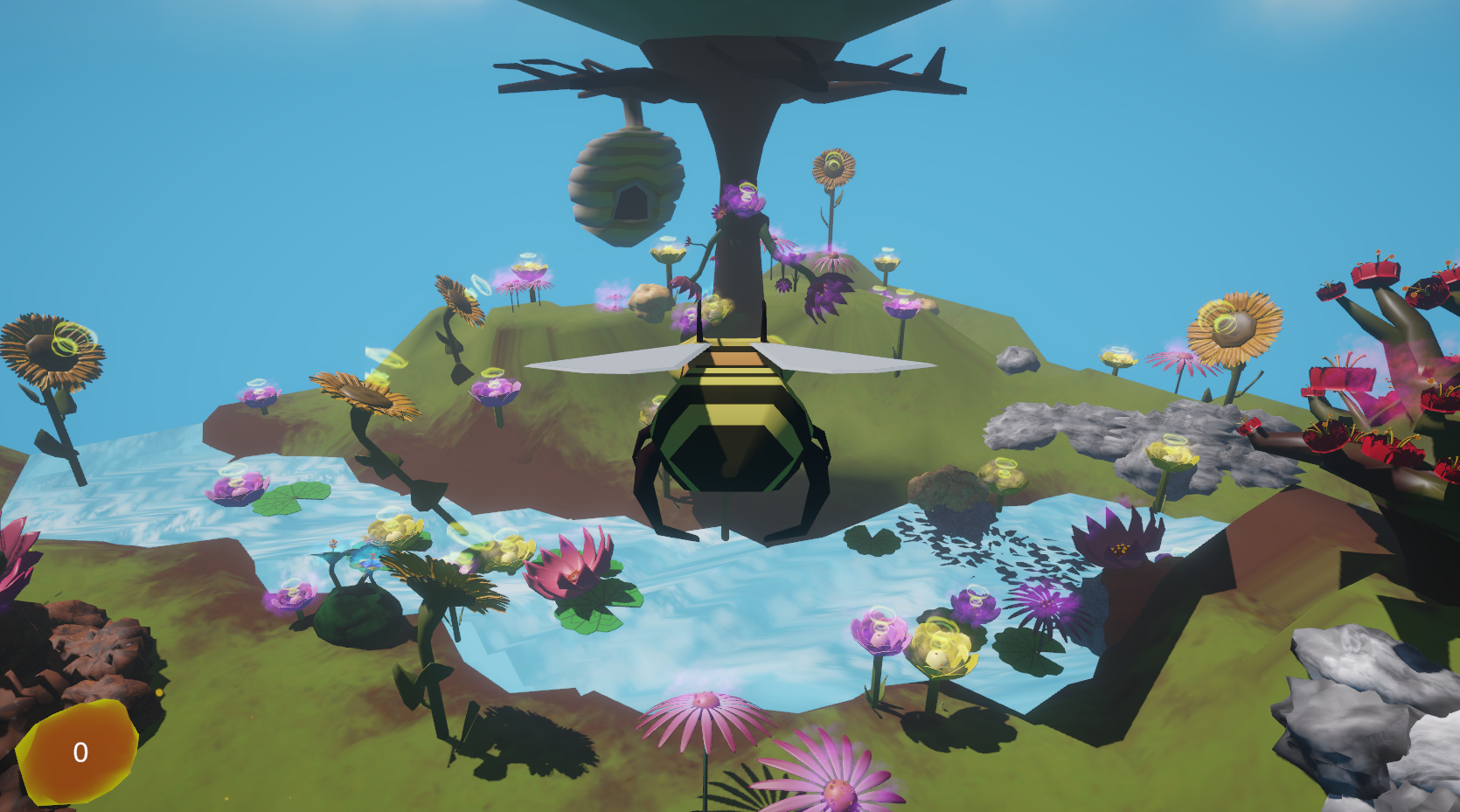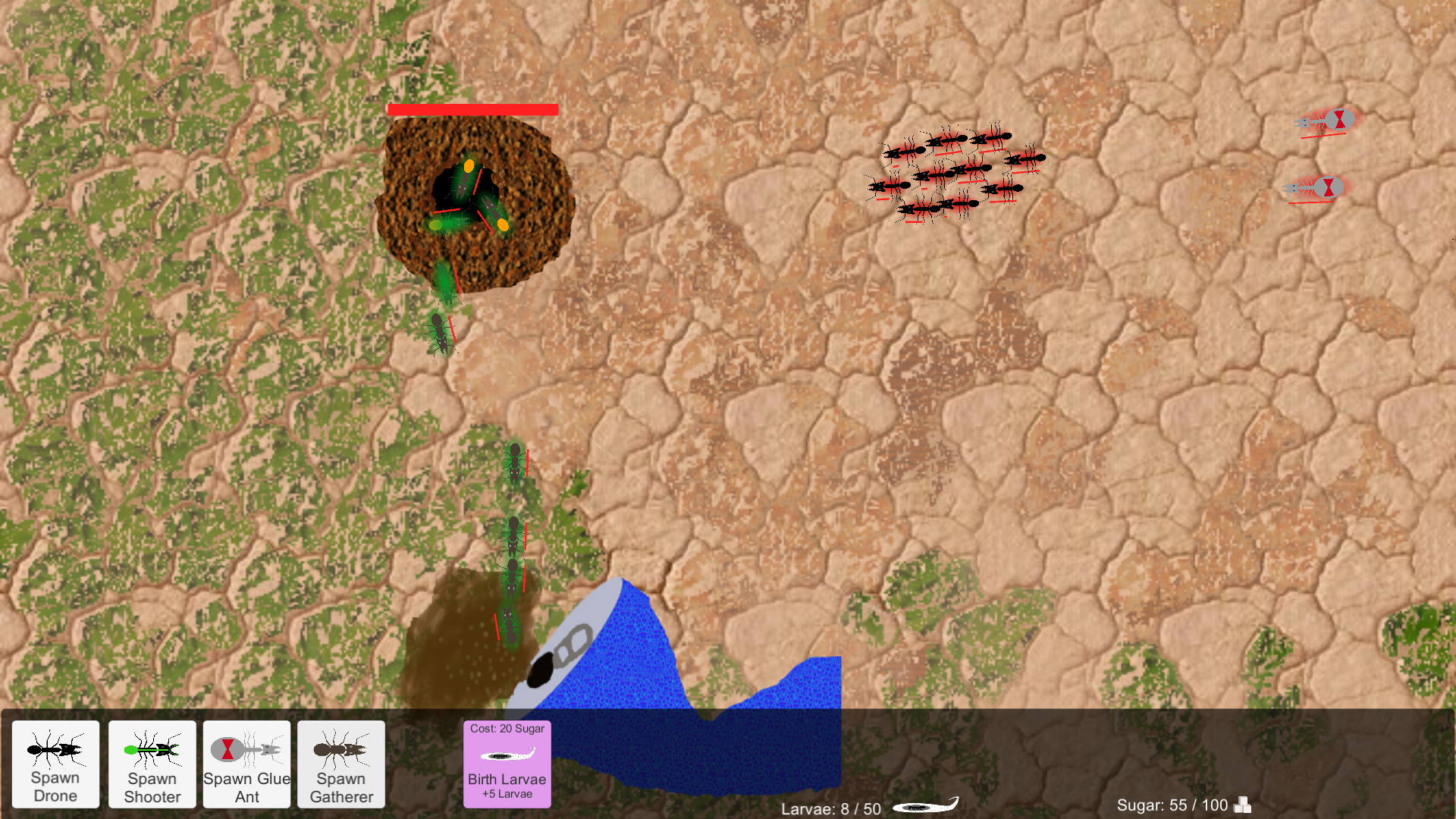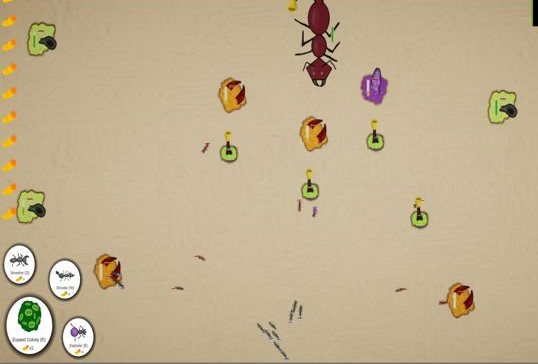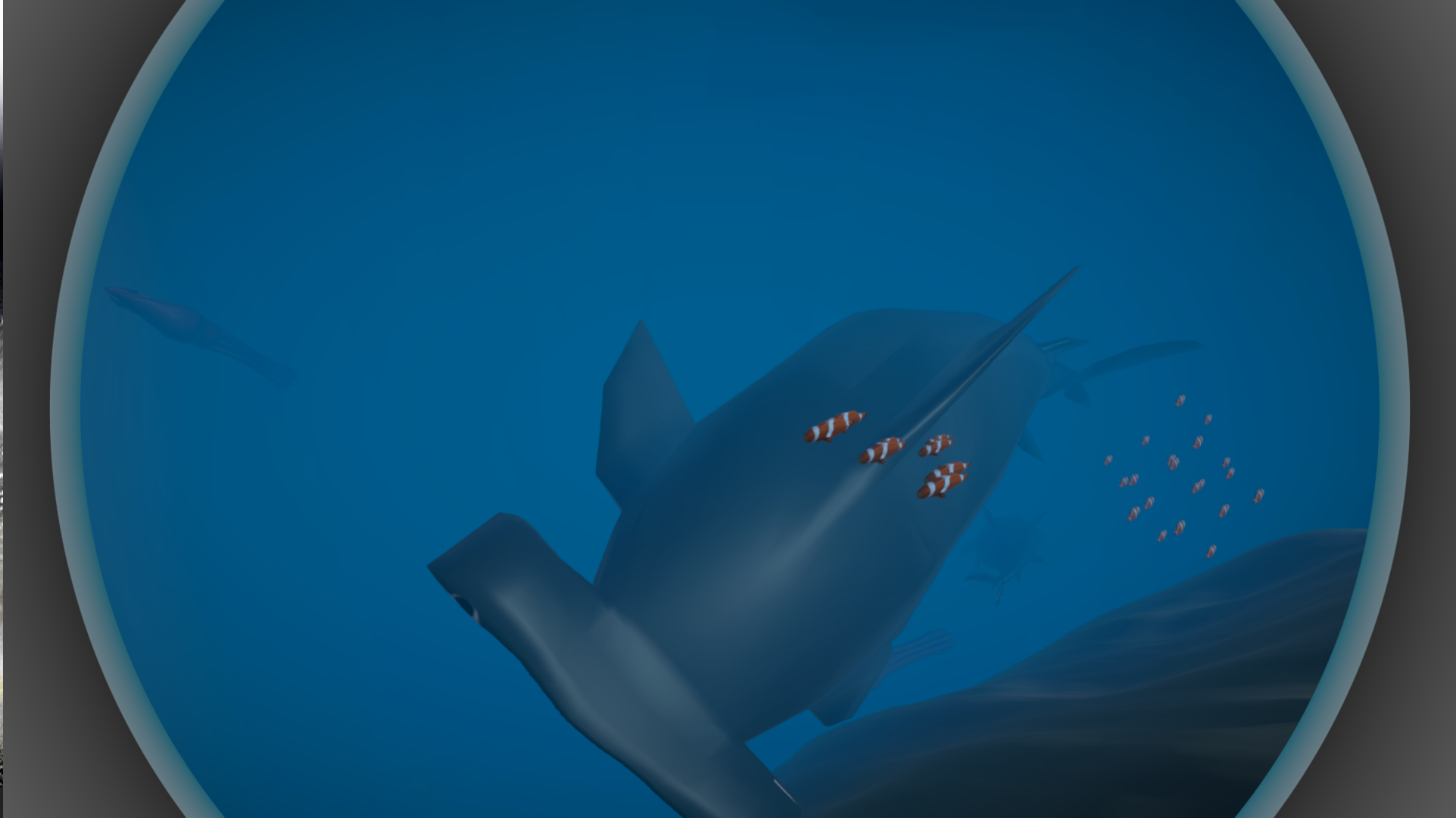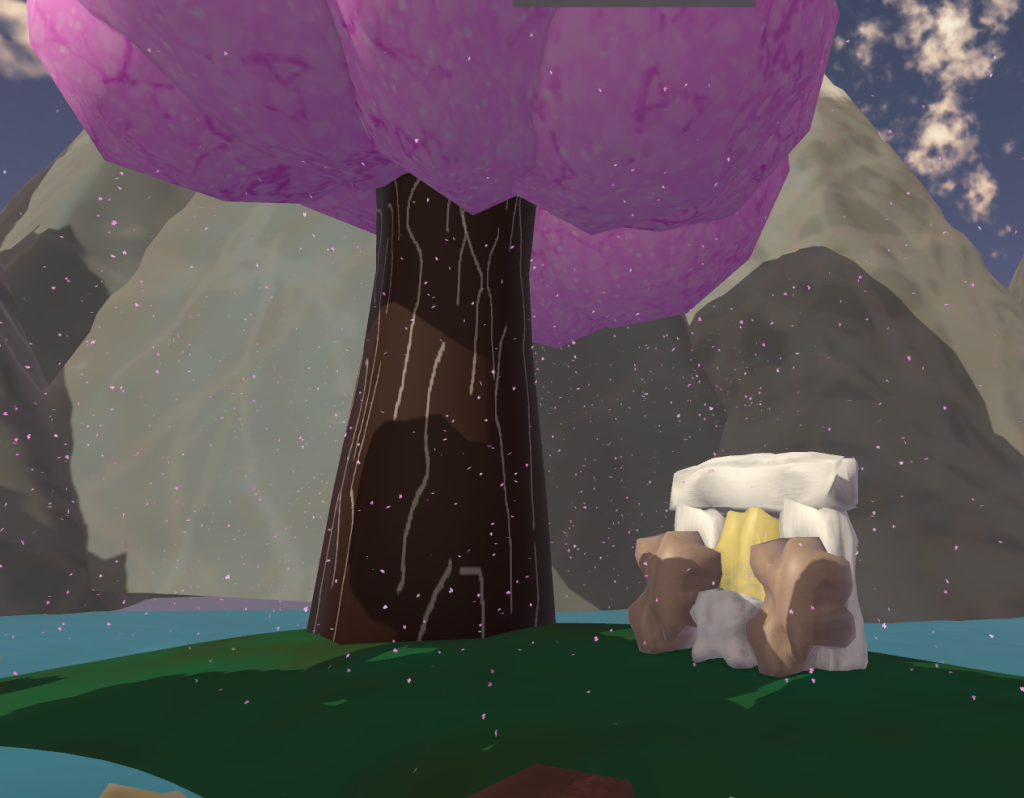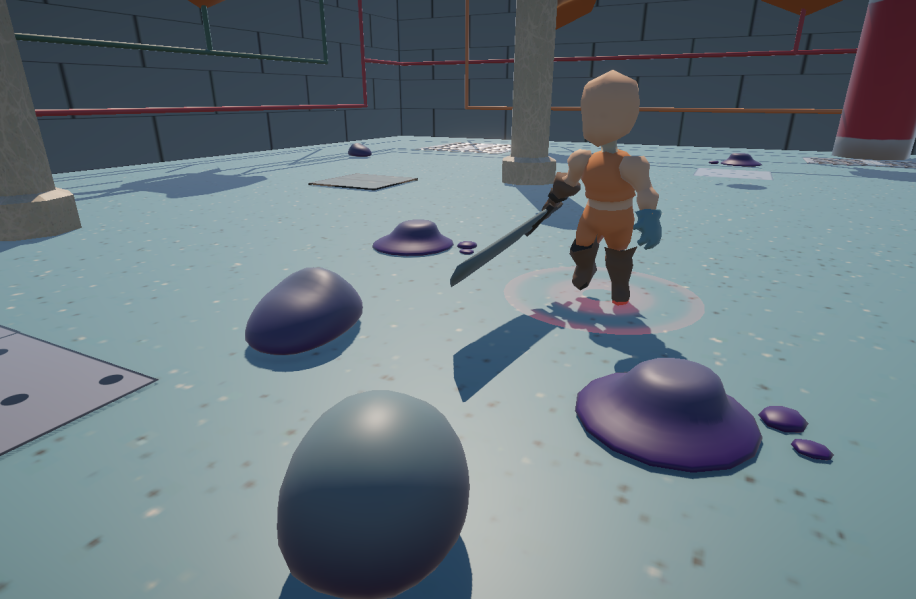Looking to check out a game I’ve made?
Play To Infinibee and Beyond!
(itch.io, in-browser or download). Made in 72 hours for Ludum Dare.
Is an app I’ve built more your speed?
Try Gridit for all your gridly needs!
(source code here)
Software
Most of my professional software work was done on internal tooling which I can’t really show or for startups that haven’t been around for a while. Some of that work is preserved on the old Chromaplex portfolio. Below are some standouts and whatever other projects I am able to share.
Gridit (2021)
I built Gridit as a tool to help with some of the games I was working on. I kept finding myself trying to visualize pathfinding or adjacency rules on grids and I just wanted a simple tool to help me do that. I was also getting exhausted by the bloat of modern javascript development and itching to build something using vanilla javascript without a modern frontend framework. Back in the day everyone used jQuery because vanilla js wasn’t enough, and then we moved on to vue/react/etc afterwards. I hadn’t written anything with standard js since it become reasonable to do so and I wanted to play around with, well, coding things badly to see how that felt. I wanted to encounter for myself more of the problems that those frameworks were solving and see if I could come up with a solution that fit my use case better.
All that is to say, Gridit started with some pretty gnarly code and has since evolved into something more purpose-built. It was a fun and enlightening exercise and the tool itself has come in handy to help me think, and since it exports to JSON I was also using it to build game maps for export to Unity as well. It’s been rather handy and there’s plenty I’d love to improve when I have the time.
How I Met My Dog (2016)
I was the lead programmer on How I Met My Dog which is still around and is an awesome service for algorithmically matching up dogs who need homes with owners who will love them.
Hirenetics (2015)
Hirenetics was an algorithm-based job matching site which solved a similar problem to How I Met My Dog but for job listing and potential hires.
Design Aglow Print (2017)
Design Aglow Print was aimed at photographers who wanted to build, sell, and print custom designs for their clients, all within a web interface. We built it out as an ecommerce site which we integrated both admin and customer-facing visual editors where designers could build and publish designs, and customers could fill in their images, text, and other customizations.
For more software and websites I’ve worked on, check out the Chromaplex portfolio.
Games
The only games of mine which have seen the light of day are small ones built for game jams, so that’s what’s listed here. If you’d like a tour of some much larger games or game codebases that I’ve written but are incomplete and/or not releasable publicly, please get in touch!
Digestion Manager (2016)
I always wanted to make video games but getting there seemed so daunting. I ended up doing web development instead until one day I heard about this game jam called Ludum Dare where you build a full game based around a specific theme, from scratch, in 3 days. I actually did know how to program, maybe I really could make a game? I grabbed a like-minded friend and we made Digestion Manager! It’s a silly resource management game where you manage a stomach and must decide which foods to digest (and which to…pass) in order to best serve the teenager you inhabit. It’s not the world’s greatest game, but it is a game and it convinced us that making games was a thing we could actually do.
Violants (2017)
Another Ludum Dare was coming up and my original comrade was busy, so I grabbed another friend and we dreamed up an ambitious game inspired by our love of Starcraft. Enter Violants, which is also not an incredible game but is far better than it has any right to be. It was the first realtime thing I’d ever programmed and everything was done as naively as possible. I knew that every choice I was making must be terrible but I made them anyway because our goal was to make the damn game (which we did…mostly!).
We’ve made a number of jam games since, several of which were not miraculous successes but all of which have taught us good lessons. On one, we spent too long building a map editor for maps we never had time to make. The map editor was clever though, and helped inspire Gridit! On another, I built a complex predator/prey AI simulation which didn’t come across at all in what little gameplay we had time to implement. Still, From those lessons came our latest stint of jam games which I’m quite proud of:
Violants 2 (2020)
Violants 2 was an ambitious followup to one of our early successes and, while definitely way too difficult to beat, turned out pretty much how we envisioned it. Given more time I’d make the core strategies more intuitive and the starting seconds less pivotal, but it’s a real game and there are a couple of valid strategies (like this one, and this one) to beat it. We even had time to do sound and music!
In a Barrel (2021)
Next up is In a Barrel, where we decided to focus as much as we could on improving our 3d prop and environment art. It’s a photography game where you explore an underwater environment, documenting the various creatures who live there. We think it turned out awesome. Of course, we still spent too much time building a photo scoring system when really ‘did the player take the photo?’ would have left a little more room for creative expression. We also had this vision of the player being in a clunky submersible and having to deal with navigating that which mostly resulted in people complaining about the controls. Ah well!
Grovetender (2022)
There was this period of the pandemic where Valheim had just come out and I feel like everyone was playing it. I had multiple games going with multiple groups of people and remember the time very fondly.
One of my favorite things about that game is just chopping trees. They made everything about it so satisfying, from sounds to VFX to the actual mechanics, where positioning yourself so that your swing hit multiple trees is more efficient, and where falling trees could knock down other trees like dominoes. I wanted to make a game that was just that sweet lumberjack gameplay.
Enter Grovetender, our entry for Ludum Dare 50. It’s pretty much that: there are 3 gates under attack and the player has to chop wood to try to reinforce them while also gathering enough to win. This one is also probably too hard to beat and the lesson from it was “decide on scale first”. Since we were short on time, we built our map, modeled our trees, etc. before really dialing in how quickly the player should move and how far apart the gates they’d need to run to would be. Since Grovetender is ultimately about sprinting between the edges of the map as quickly as possible, we’d coupled the key balance consideration (how long does it take for the player to move between each gate and the trees) to the map itself in a way that made it difficult to change. It also prevented us from making the trees taller so they’d domino more. It mostly works, in the end!
To Infinibee and Beyond (2023)
We had fun building little worlds for Grovetender and In a Barrel and wanted to focus on that even more for this jam, so we decided to build a game with one super simple core mechanic. A falling simulator is what we came up with: The player can steer left and right but otherwise is slowly gliding forward and downwards and must try to stay airborne. From there we just had to build a world full of ways to stay airborne and stuff to collect! I really love this game and am proud of what we got done in so little time. It even has a theme song which gets stuck in my head whenever I think of it!
No Gloop, No Glory (2023)
Flush with our bee success and with a fourth team member on board, we decided to do something ambitious for this one and have multiple animated 3d characters, one humanoid and one…blob. The theme was “Limited Space” so we wanted to put the player into some kind of small arena where they have to avoid a big enemy. Doubling that up, we thought it would be cool for that space to also shrink over time, which is why the player is a slime who grows and grows as they become more powerful, until finally they can consume the big enemy hero. Things don’t quite play out exactly like that and getting the navigation meshes to play nice with a player of so many varying sizes was some good learning, but once you get some abilities and start pulling off clever slime combos, this game starts to feel pretty good. Give it a go and see if you can beat the hero!
For more games I’ve made, you can check out my Ludum Dare profile.
